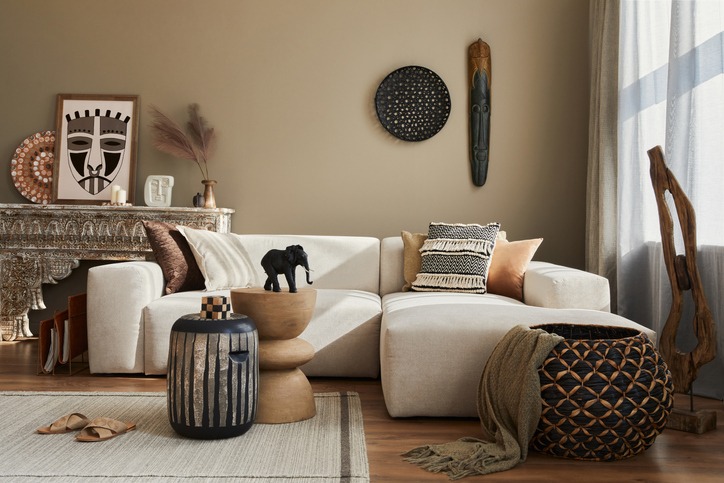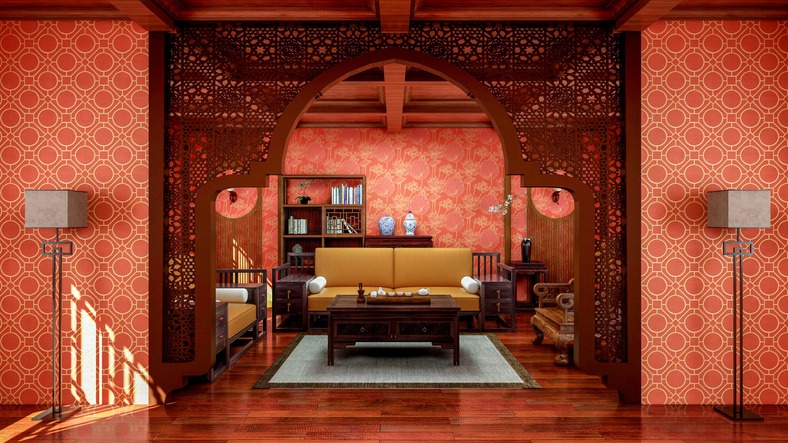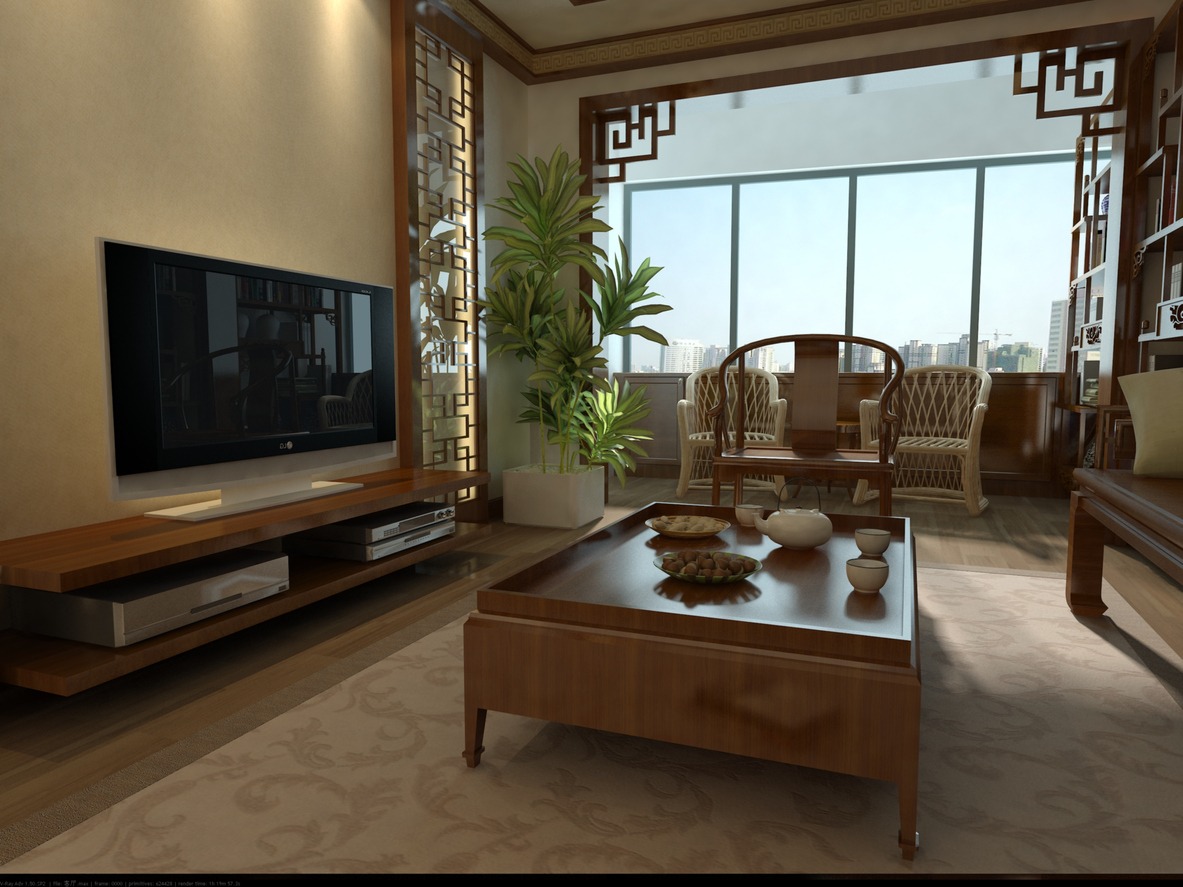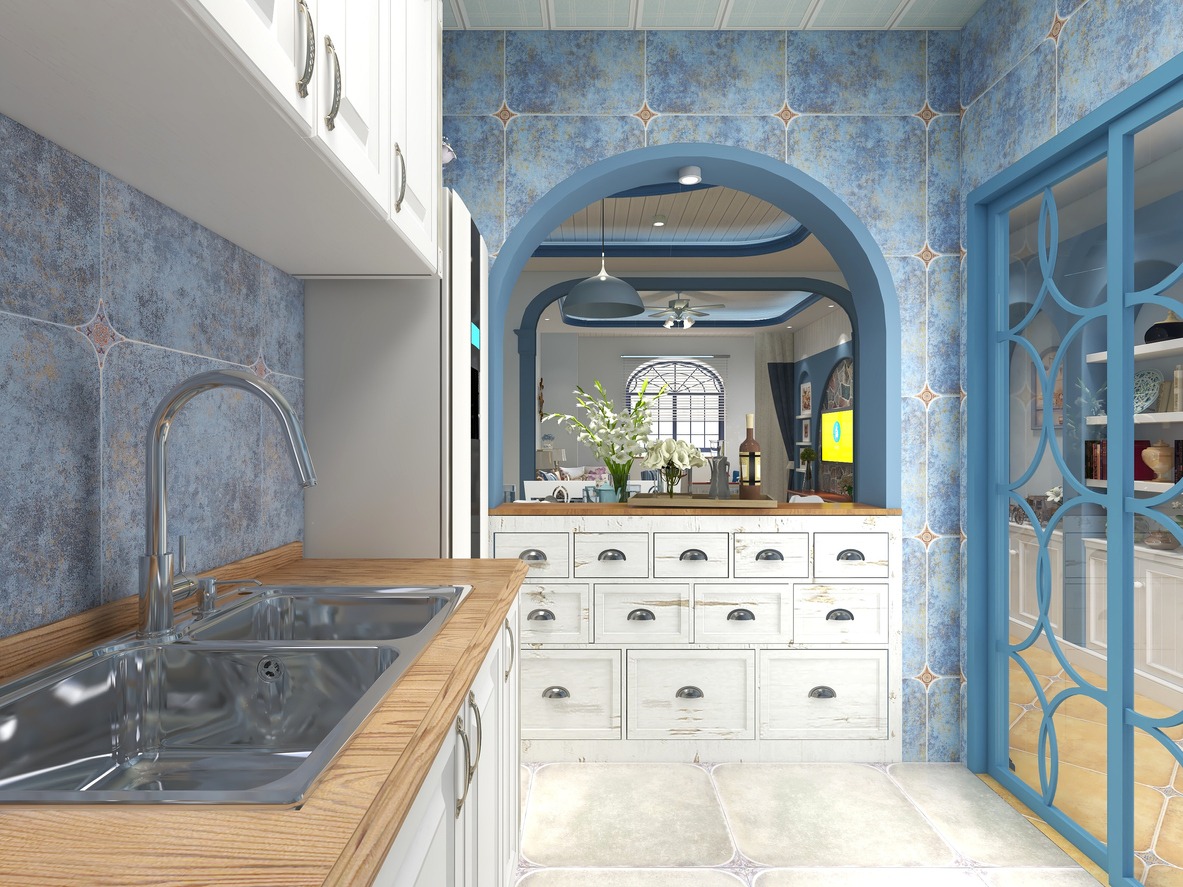Interior design, a multifaceted discipline, intertwines artistic expression with practical functionality to create spaces that are not only aesthetically pleasing but also culturally resonant. At its core, interior design transcends mere decoration; it reflects the complex interplay of cultural influences, historical context, and personal identity. This article delves into the myriad ways in which culture profoundly impacts and shapes the realm of interior design.
Overview of Cultural Influences in Interior Design
Culture plays an indispensable role in shaping interior design. It acts as a lens through which we view, understand, and create spaces. Cultural influences in interior design are reflected in the choice of colors, materials, textures, and layouts. They bring a sense of place and identity to interiors, grounding them in a specific context or tradition. This aspect of design is especially important in our increasingly globalized world, where interiors can serve as a bridge between the global and the local, the contemporary and the traditional.
Historical Perspective of Cultural Influences
Evolution of Interior Design from Historical Cultures
Egyptian Influence: Ancient Egyptian interior design was characterized by its monumentality and the use of bold colors and hieroglyphic decorations. Spaces were designed to accommodate the Egyptian belief in the afterlife, with an emphasis on durability and eternity. This led to the creation of grand, elaborate interiors, often adorned with gold, ivory, and precious stones.
Roman Influence: Roman design was known for its architectural prowess, with interiors featuring high ceilings, open spaces, and intricate detailing. The use of mosaics, frescoes, and sculptures was prevalent, reflecting a culture that valued art and public life. Roman influence is still seen in the use of columns, domes, and arches in modern design.
Chinese Influence: Traditional Chinese interior design was deeply connected to the principles of Feng Shui and Taoism, focusing on balance, harmony, and the flow of energy. The use of natural materials, screens, and calligraphy reflected a deep respect for nature and a focus on spiritual tranquility.
Indian Influence: Indian interior design is known for its vibrant colors, rich patterns, and an eclectic mix of textures. It reflects a deep-seated heritage of craftsmanship in textiles, woodworking, and metalworking. Spaces are often designed to be welcoming and comfortable, reflecting the Indian ethos of hospitality.
Impact of Trade and Colonization on Interior Design
The era of global exploration, trade, and colonization had a profound impact on interior design. As European powers colonized various parts of the world, they brought back exotic materials, textiles, and design ideas, integrating them into their own styles. This era saw the emergence of ‘Chinoiserie’ in Europe, an aesthetic inspired by Chinese art and design. Similarly, ‘Orientalism’ brought Middle Eastern and Asian influences into Western design, characterized by intricate patterns, luxurious textiles, and ornate furniture.
Conversely, in colonized lands, local design began to reflect European influences. This can be seen in the colonial architecture and interiors of countries like India, where British influence merged with traditional Indian elements to create something unique.
The trade routes not only exchanged goods but also ideas and styles, leading to a rich tapestry of design that combined elements from vastly different cultures. This fusion created a global vocabulary of design that continues to evolve and influence contemporary interior design.
Explore the Significant Influences of the 1990’s Interior Design Styles in today’s interior design landscape. Visit Popular Interior Design Styles of the 90s.
Cultural Elements in Interior Design
Color: Cultural Symbolism and Meanings
Color in interior design is much more than a visual aesthetic; it’s a language that communicates values, traditions, and beliefs. Across different cultures, colors hold specific meanings and evoke various emotions.
Red in Chinese Culture: In China, red symbolizes good luck, joy, and prosperity. It’s prominently used in festive occasions and to decorate spaces to attract positive energy.
Blue in Mediterranean Cultures: The use of blue, especially in Greek interiors, reflects the color of the sea and the sky, symbolizing freedom and tranquility. It’s often paired with white, denoting purity and brightness.
Earthy Tones in African Design: African interior design often features earthy tones like browns, greens, and ochres, symbolizing the connection to the land and nature. These colors are frequently used in combination with vibrant patterns.

Patterns and Textures: Cultural Origins and Adaptations
Patterns and textures bring depth and context to interior design, often derived from cultural histories and narratives.
Islamic Geometric Patterns: Islamic design avoids the representation of living forms, focusing instead on geometric patterns that symbolize the infinite. These patterns are not just decorative; they’re deeply imbued with spiritual significance.
Native American Textiles: Native American designs incorporate symbols and patterns that tell stories or represent beliefs, natural elements, or historical events. These textiles add a layer of meaning and cultural history to the spaces they adorn.
Scandinavian Textures: In contrast to more ornate styles, Scandinavian design emphasizes simplicity and functionality, often using natural textures like wood and wool to create a cozy, minimalist environment.
Furniture and Artifacts: Traditional Styles and Modern Interpretations
Furniture and artifacts are tangible expressions of cultural history and craftsmanship, offering a glimpse into the lifestyles and values of different societies.
Indian Handcrafted Furniture: Known for its intricate carvings and vibrant colors, Indian furniture often reflects the country’s rich artistic heritage. Modern interpretations might simplify these details for a contemporary setting while retaining the traditional essence.
Japanese Minimalist Furniture: Japanese furniture design, influenced by Zen philosophy, focuses on minimalism and natural materials. Modern interpretations maintain these principles, emphasizing functionality and simplicity.
Regional Influences in Modern Interior Design
Scandinavian Minimalism
Scandinavian design, originating from countries like Denmark, Norway, and Sweden, is characterized by its simplicity, functionality, and connection to nature. The use of light, neutral colors, natural wood, and clean lines creates a sense of calm and order. This style’s popularity in modern interiors lies in its ability to create functional and beautiful spaces that are uncluttered and serene.
Mediterranean Warmth and Rustic Charm
Mediterranean design reflects the colors and textures of the sea and surrounding landscape. It’s known for its use of warm, earthy tones, terracotta tiles, rustic wood, and wrought iron elements. This style creates a welcoming, relaxed atmosphere that is both timeless and inviting.
Japanese Zen and Simplicity
Japanese interior design is influenced by Zen philosophy, emphasizing minimalism, balance, and harmony with nature. The use of sliding doors (Shoji), Tatami mats, and a restrained color palette creates a tranquil and mindful space. The modern adaptation of this style often incorporates these elements in a way that complements contemporary lifestyles.
Middle Eastern Opulence and Intricate Designs
Middle Eastern design is distinguished by its luxurious fabrics, vibrant colors, and detailed craftsmanship. Ornate carpets, intricate tile work, and lavish textiles are hallmarks of this style. In modern interpretations, these elements are often blended with more minimalist aesthetics to create a balance between opulence and subtlety.
Fusion and Eclectic Styles
Combining Multiple Cultural Elements
Fusion and eclectic styles in interior design represent a harmonious blend of diverse cultural influences, creating unique and personalized spaces. This approach acknowledges that design is not confined to geographical or cultural boundaries, but rather it is a fluid and evolving art form.
Principles of Fusion Design: Successful fusion interior design lies in finding a balance. It’s about merging elements such as color palettes, textures, and furniture from different cultures in a way that is cohesive and aesthetically pleasing. The key is to respect the individuality of each element while ensuring they complement each other.
Global Influence in Fusion: With increased global mobility and digital connectivity, fusion styles have become more prevalent. They often reflect the multicultural experiences and identities of their inhabitants, showcasing a global narrative.
Impact of Globalization on Interior Design
The Blend of Eastern and Western Design Philosophies
Globalization has led to a unique synthesis of Eastern and Western design philosophies. This intersection has given rise to spaces that marry the minimalism and functionality of Western design with the spiritual and naturalistic elements of Eastern design.
Examples of East-West Fusion: We see modern spaces adopting the Japanese concept of ‘Ma’ (the conscious use of space) alongside the Western emphasis on comfort and technology. Similarly, the Scandinavian principle of ‘Hygge’ (creating a warm atmosphere) is often blended with Eastern practices of mindfulness and simplicity.
The Rise of Global Design Trends and Their Cultural Roots
As the world becomes increasingly interconnected, interior design trends are now global in their reach and influence. These trends, however, are deeply rooted in specific cultural contexts.
Global Trends with Local Influences: The popularity of bohemian or ‘boho’ style is a prime example. It’s a cosmopolitan trend that draws heavily from various cultures, including Middle Eastern, African, and Native American. The style is known for its vibrant colors, eclectic patterns, and artisanal objects, reflecting a global tapestry of design influences.
Technology and Global Design: The digital age has further propelled this globalization of design. Online platforms and social media have allowed designers and homeowners to draw inspiration from styles around the world, leading to a dynamic and ever-evolving design landscape.
Sustainability and Cultural Traditions
Incorporating Sustainable Practices from Different Cultures
Many cultures have a long history of sustainable practices that are deeply embedded in their traditional ways of living and designing spaces. Modern interior design can learn and incorporate these practices to create more environmentally friendly and sustainable spaces.
Traditional Wisdom: Practices such as using local and natural materials, optimizing natural light and ventilation, and designing according to the local climate are examples of traditional wisdom that contribute to sustainability. For instance, the traditional Japanese practice of using local wood and bamboo is not only sustainable but also brings a sense of nature into homes.
Learning from Indigenous Cultures: Indigenous cultures often have a symbiotic relationship with their environment. Their design principles, which include the use of renewable resources and minimal waste, can inspire modern sustainable design practices.
Traditional Materials and Eco-Friendly Design
Sustainability in interior design also involves the use of materials that are environmentally friendly and have a low impact on the earth.
Eco-Friendly Materials: Materials such as bamboo, cork, reclaimed wood, and natural fibers like wool and cotton are not only sustainable but also add a unique aesthetic to interiors. These materials often come with stories and traditions from their places of origin, adding cultural depth to their use.
Sustainable Techniques: Traditional construction techniques that require less energy and produce less waste can be adapted in modern design. For instance, rammed earth construction, a technique used in many parts of the world for centuries, is re-emerging as a sustainable building practice.
Future Trends: Technology and Culture in Interior Design
Digital Influences and Cultural Preservation
The intersection of technology and culture in interior design is reshaping how we perceive and create spaces. Digital tools and platforms are not only influencing design trends but also playing a crucial role in preserving and disseminating cultural design elements.
Digital Archiving and Preservation: Advanced digital technologies are being used to archive cultural artifacts and traditional design techniques, ensuring that these important elements are not lost to time. This digital preservation provides a rich resource for designers and researchers interested in incorporating authentic cultural elements into their work.
Online Platforms for Cultural Exchange: Social media and online design platforms have become hubs for sharing and celebrating cultural interior designs. They allow designers from different parts of the world to showcase their work, exchange ideas, and collaborate, leading to a more inclusive and diverse design community.
Technology in Traditional Craftsmanship: Advanced technology is also being integrated into traditional craftsmanship, helping artisans to preserve their techniques while adapting to the modern market. For instance, computer-aided design (CAD) tools are used to replicate intricate traditional patterns in a more efficient manner.
Virtual Reality and Immersive Cultural Experiences
Virtual reality (VR) and augmented reality (AR) technologies are opening new frontiers in interior design, particularly in creating immersive cultural experiences.
Virtual Reality Design Tools: VR allows designers and clients to virtually inhabit spaces before they are built, offering a new way to experience and understand cultural design elements in context. This can be particularly useful for visualizing how traditional designs can be adapted in contemporary spaces.
Educational and Cultural Exploration: VR and AR can be used for educational purposes, providing immersive experiences that explore different cultural designs and architectural styles. This technology can transport users to different parts of the world, allowing them to experience the beauty and intricacy of various cultural designs firsthand.
Interactive and Personalized Design Experiences: These technologies enable interactive and personalized design experiences. Users can experiment with different cultural design elements in virtual spaces, helping them understand the cultural context and see how these elements can be harmoniously integrated into their own spaces.
Conclusion
The exploration of cultural influences in interior design reveals a rich tapestry of history, tradition, and innovation. As we have seen, the impact of various cultures on interior design is profound and multifaceted, ranging from the use of color and patterns to the integration of sustainable practices and the infusion of technology.
One of the key takeaways is the importance of respecting and understanding cultural heritage in design. Each cultural element, whether it be a color, a pattern, or a piece of furniture, carries with it a story and a history that deserves recognition and appreciation. As designers and enthusiasts, it’s our responsibility to approach cultural elements with sensitivity and appreciation, ensuring that our designs not only look beautiful but also pay homage to their origins.
The influence of globalization on interior design has opened up a world where cultures can blend and coexist in a single space. This has given rise to eclectic and fusion styles that celebrate diversity and inclusivity. It’s a testament to the power of design to transcend boundaries and create spaces that are reflective of a global narrative.
The role of technology in shaping the future of interior design is undeniable. From digital preservation of cultural designs to the immersive experiences offered by VR and AR, technology is not just changing how we design spaces but also how we experience and interact with them. It offers a gateway to explore and integrate cultural elements in ways that were previously unimaginable.
The integration of sustainability in design, inspired by traditional practices, highlights the importance of creating spaces that are not only culturally rich but also environmentally responsible. This approach ensures that the spaces we inhabit are harmonious with both our cultural values and our natural environment.
Ultimately, interior design acts as a bridge between past and present, traditional and modern, local and global. It is a form of expression that can unite cultures, tell stories, and create environments that are meaningful, functional, and beautiful. As we move forward, the continuing evolution of interior design will undoubtedly be influenced by a deeper understanding and appreciation of the world’s rich cultural tapestry, reflecting a global community that values diversity, sustainability, and innovation.
In conclusion, the cultural influences in interior design provide not just a framework for aesthetics but also a platform for cultural dialogue, environmental stewardship, and technological advancement. As we embrace these influences, we enrich our spaces and, by extension, our lives, with a depth and richness that transcends mere visual appeal.





